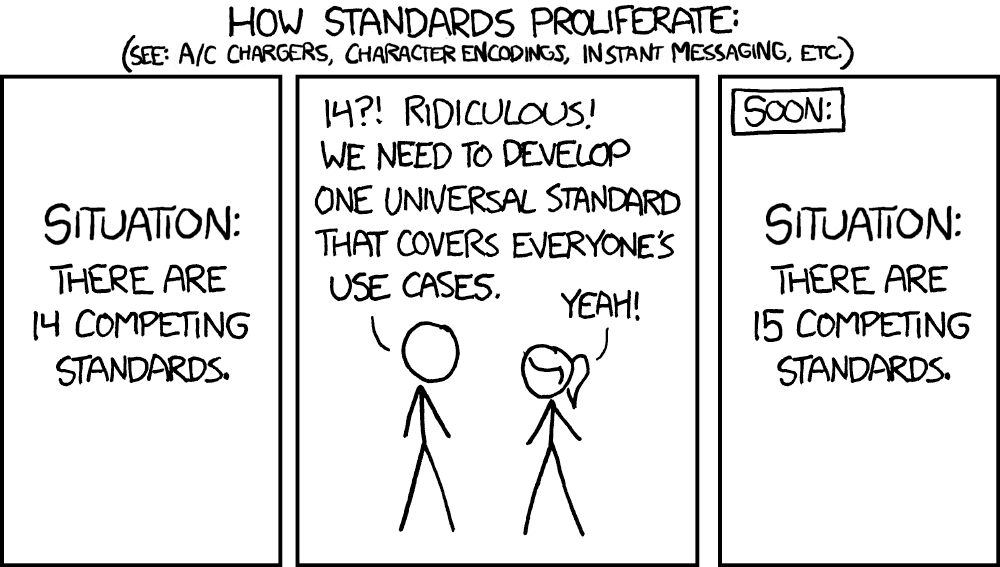|
Some checks failed
Continuous integration / Tests (push) Blocked by required conditions
Continuous integration / Tests (windows-latest) (push) Waiting to run
Continuous integration / Check clippy, formatting, and documentation (push) Failing after 20s
Continuous integration / Tests (ubuntu-latest) (push) Failing after 22s
Continuous integration / Check fuzzers (push) Failing after 18s
Continuous integration / Check mininum Rust version (push) Failing after 20s
|
||
|---|---|---|
| .. | ||
| examples | ||
| src | ||
| .cargo-checksum.json | ||
| Cargo.lock | ||
| Cargo.toml | ||
| LICENSE | ||
| README.md | ||
struct RGB for Rust 
Operating on pixels as weakly-typed vectors of u8 is error-prone and inconvenient. It's better to use vectors of pixel structs. However, Rust is so strongly typed that your RGB pixel struct is not compatible with my RGB pixel struct. So let's all use mine :P
Installation
Add this to your Cargo.toml:
[dependencies]
rgb = "0.8.43"
Usage
RGB and RGBA structs
The structs implement common Rust traits and a few convenience functions, e.g. map that repeats an operation on every subpixel:
use rgb::*; // Laziest way to use traits which add extra methods to the structs
let px = RGB {
r:255_u8,
g:0,
b:255,
};
let inverted = px.map(|ch| 255 - ch);
println!("{}", inverted); // Display: rgb(0,255,0)
assert_eq!(RGB8::new(0, 255, 0), inverted);
Byte slices to pixel slices
For interoperability with functions operating on generic arrays of bytes there are functions for safe casting to and from pixel slices.
let raw = vec![0u8; width*height*3];
let pixels: &[RGB8] = raw.as_rgb(); /// Safe casts without copying
let raw_again = pixels.as_bytes();
Note: if you get an error about "no method named as_bytes found", add use rgb::ComponentBytes. If you're using a custom component type (RGB<CustomType>), implement rgb::Pod (plain old data) and rgb::Zeroable trait for the component (these traits are from bytemuck crate).
About colorspaces
Correct color management is a complex problem, and this crate aims to be the lowest common denominator, so it's intentionally agnostic about it.
However, this library supports any subpixel type for RGB<T>, and RGBA<RGBType, AlphaType>, so you can use them with a newtype, e.g.:
struct LinearLight(u16);
type LinearRGB = RGB<LinearLight>;
BGRA, ARGB, Gray, etc.
There are other color types in rgb::alt::*. There's also an optional serde feature that makes all types (de)serializable.
Roadmap to 1.0
The plan is to provide easy migration to v1.0. There will be a transitional v0.9 version released that will be mostly backwards-compatible with 0.8, and forwards-compatible with 1.0.
Planned changes:
- Types will be renamed to follow Rust's naming convention:
RGBA→Rgba. The old names will continue to work as hidden aliases. - The
GrayandGrayAlphatypes will change from tuple structs with.0to structs with named fields.v(value) and.a(alpha). Through aDereftrick both field names will work, but.0is going to be deprecated. bytemuck::Pod(conversions from/to raw bytes) will require color and alpha components to be the same type (i.e. it will work withRgba<u8>, but notRgba<Newtype, DifferentType>). Currently it's unsound if the alpha has a different size than color components.- Many inherent methods will be moved to a new
Pixeltrait.
Migration from 0.8 to 0.9
-
Update to the latest version of 0.8, and fix all deprecation warnings.
- rename
.alpha()to.with_alpha() - rename
.map_c()to.map_colors()
- rename
-
Change field access on
GrayAlphafrom.0and.1to.vand.awhere possible. -
Use the
bytemuckcrate for conversions from/to bytes instead ofComponentBytestrait. Disable theas-bytesfeature if possible. -
Don't enable
gbrandargbfeatures. All pixel types are enabled by default. -
In generic code operating on pixels, add
Copy + 'staticbounds to the pixel types and/or their components. -
Test your code with
rgb = { version = "0.8.46", features = ["unstable-experimental"] }, which enables some of the future breaking changes on the older version. This feature flag is only for testing, and will be changed/removed in the future. -
Avoid wildcard imports from
rgb::alt::*, and avoid usingGRAY8-GRAYA16type aliases.
